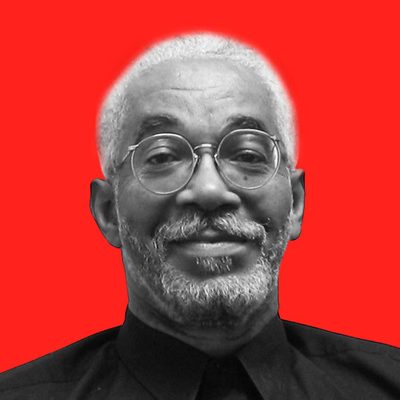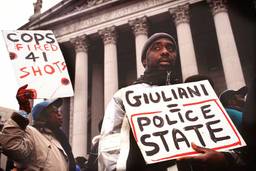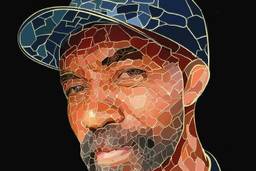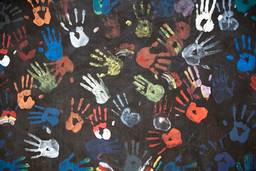The overwhelming absence of Black men has always been one of the most distressing facts about life in America’s public housing developments. In Chicago, for example, black women are the vast majority of lease holders in the Chicago Housing Authority; men are like ghosts in the projects.
Besieged by poverty, disease, violence and mass incarceration, African-American men are conspicuously missing in action. At one time, this gender imbalance afflicted mostly lower-income neighborhoods. But as we limp into the 21st century, that gender gap is rending the fabric of the entire African-American community.
“Where have all the Black men gone?” asked the headline on a story by Jonathan Tilove for The Star Ledger in Newark, N.J. The article examined the New Jersey city of East Orange, where there are 37 percent more adult women than men. Tilove wrote that most of the missing men are dead, and many others are locked up or in the military.
“Worst yet,” he wrote, “the gender imbalance in East Orange is not some grotesque anomaly. It’s a vivid snapshot of a very troubling reality in black America.” Tilove noted that nationwide adult black women outnumber black men by 2 million. With nearly another million black men in prison or the military, the reality in most black communities across the country is an even greater imbalance – a gap of 2.8 million, or 26 percent, according to Census Bureau figures for 2002. The comparable disparity for whites was 8 percent.
In some cities the gap is even higher. There are more than 30 percent more black women than men in Baltimore, New Orleans, Chicago and Cleveland. In New York City the number is 36 percent and in Philadelphia, 37 percent. As the black population ages, the gap widens. “By the time people reach their 60s in East Orange, there are 47 percent more black women than men,” Tilove wrote.
This growing gender gap has enormously negative implications for the future of black America. And there are nuances in the statistics that make the prognosis even bleaker. For example, among well-educated, professional black women – a group that is growing rapidly – the gap is a chasm. Surely, that progress for black women is good news that shouldn’t be overlooked. However, as black women advance, black men are falling even further behind.
In fact, the more successful a black woman becomes, the more likely she will end up alone, Walter Farrell, a University of North Carolina professor, said in a March 2002 Washington Monthly article. As a result, professional black women are having fewer children, meaning that a growing percentage of black children are being born into less educated, less affluent families.
The recent edition of the Journal of Blacks in Higher Education warns that “a large and growing gender gap in African-American higher education has become a troublesome trend casting a shadow on overall black education progress.” The Journal reports that in 2001, there were 1,095,000 black women enrolled in institutions of higher education and only 604,000 black men. The gap, which is even wider at professional schools, has increased since 2001.
It’s also important to note that despite unprecedented gains, black women are the fastest growing group of inmates in the nation’s prisons. And they still bear the brunt of urban poverty as single parents in the commercial wastelands that too often are their neighborhoods.
Unless we make some dramatic changes in the way our society tracks black men, all of these conditions will worsen, with increasingly nightmarish consequences. The primary culprit is the tracking of black men into a criminal justice system that a growing number of critics have dubbed the “prison-industrial complex.” Many are there because of the so-called war on drugs and its accompanying mandatory minimum sentences.
The tracking process begins in elementary school, where African-American males routinely are assumed to be academically deficient and then demonized for their angry reactions to those biased assumptions. Resentful of a system that blithely dismisses their potential, many black boys eventually become alienated from scholastic activity. A recent study found that only 38 percent of Chicago’s black males have graduated from high school since 1995.
These uneducated youth are the raw material of the prison-industrial complex. Lacking marketable skills, they flock to the ruthless underground economy of drug commerce where they are easily siphoned into the “injustice” system – victims of the drug war. Some also become victims of lethal gun violence – homicide remains the leading cause of death for young black men.
Unless we strenuously intervene to better the prospects of African-American men, who incidentally comprise about one-eighth of the earth’s entire population of prison inmates, we may just be accomplices to a process of genocide in our own country.

I hope you found this article important. Before you leave, I want to ask you to consider supporting our work with a donation. In These Times needs readers like you to help sustain our mission. We don’t depend on—or want—corporate advertising or deep-pocketed billionaires to fund our journalism. We’re supported by you, the reader, so we can focus on covering the issues that matter most to the progressive movement without fear or compromise.
Our work isn’t hidden behind a paywall because of people like you who support our journalism. We want to keep it that way. If you value the work we do and the movements we cover, please consider donating to In These Times.
Salim Muwakkil is a senior editor of In These Times and host of “The Salim Muwakkil Show” on radio station WVON-AM in Chicago. Muwakkil was also contributing columnist for both the Chicago Sun-Times (1993 – 1997) and the Chicago Tribune (1998 – 2005). He is also a co-founder of Pacifica News’ network daily “Democracy Now” program and served as an adjunct professor at Northwestern University, University of Illinois, the Art Institute of Chicago and Chicago’s Columbia College.








